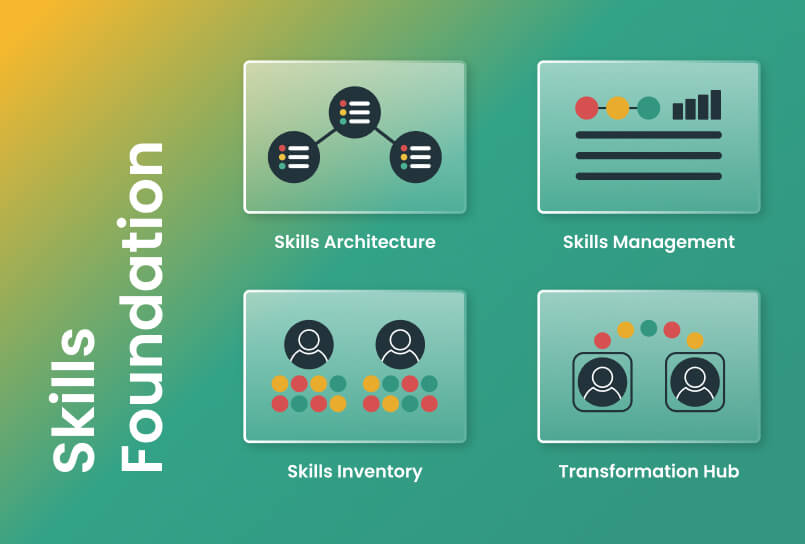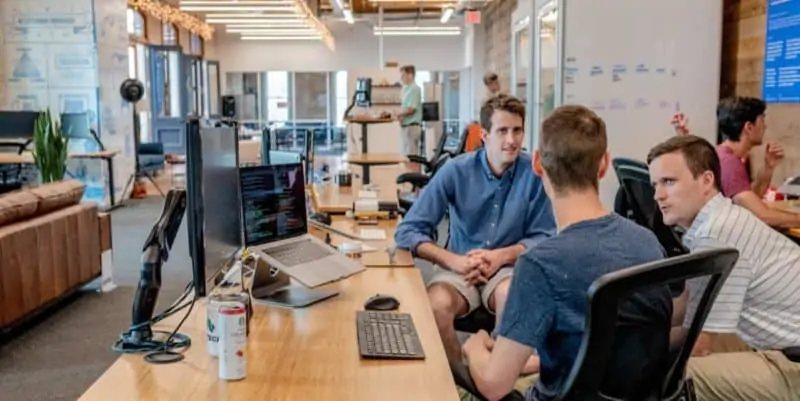Understanding workforce planning: insights and best practices
Learn how to upgrade this crucial component of talent management

From organizing a party to getting ready for a big trip, most things go better when you plan ahead—and talent management is no exception. Companies that keep tabs on their workforce’s skills and capacity levels are generally best prepared to pivot when demands change or new challenges emerge.
While most organizations are eager to equip leaders with a comprehensive picture of their workforce’s capabilities, 55% of HR managers acknowledge that their jobs and skills information only partially meets their needs.
Rather than settling for subpar insights, visionary organizations are taking their workforce planning efforts to the next level by harnessing skills intelligence systems to identify emerging knowledge gaps and keep a pulse on market trends.
What is workforce planning?
Workforce planning is the process of analyzing, forecasting, and planning workforce supply and demand, evaluating skill gaps, and determining target talent management interventions to ensure that a business has the right people—with the right skills—in the right places at the right times.
By pinpointing knowledge gaps, companies can plan effectively to ensure their organization has properly skilled employees in the correct roles, which helps support the business in maintaining efficient operations and achieving its goals. With an impactful workforce planning strategy, a business will always be staffed with the necessary talent, knowledge, and experience to produce positive outcomes.
4 key elements of effective workforce planning
Some of the key components to a successful workforce planning strategy include:
#1. Skills inventory
Before leaders can determine what upskilling and reskilling initiatives to prioritize, they need insight into where skills lie—which is exactly what a skills inventory provides. It’s an internal database of employee skills, experiences, goals, and roles that typically includes a combination of soft skills and technical abilities.
#2. Skill gap analysis
Once you’ve taken stock of your workforce’s skills, it’s important to see how these capabilities stack up with industry standards. Conducting a skill gap analysis helps executives pinpoint which learning and development initiatives should be prioritized, such as additional technical training to bridge IT gaps. When leaders become aware of these gaps, they can begin creating strategies to overcome them—including redeploying and reskilling internal talent and hiring externally as needed.
#3. Forecasting
Leaders must keep a pulse on which roles in their organizations are becoming outdated, as well as new “sunrising” roles that are becoming more popular. With help from AI-powered skills intelligence systems, executives can gain insight into the capabilities that are surging in demand and the jobs that will be needed in the years to come.
#4. Capacity planning
Another key component of workforce planning is understanding exactly what headcount you’ll need to perform various responsibilities. Leaders must understand the skills their people have and how they can be allocated in a way that maximizes efficiency and empowers everyone to reach their full potential.
How does workforce planning differ from workforce management?
While workforce planning and workforce management may sound the same, the two terms have distinct meanings. The former is about analyzing the supply and demand of talent to ensure you have the skills and headcount needed, while the latter describes the process of improving the productivity of every employee.
Workforce management involves the creation of schedules and labor forecasts, while workforce planning is more about analyzing which skills are on the rise and on the decline and ensuring your workforce has the knowledge needed to keep pace with shifting market demands.
What are the benefits of workforce planning?
There are 3 main reasons why every HR leader should prioritize workforce planning, including:
Build an efficient staffing model
Now that skills needs are ever-changing and consumer expectations are constantly evolving, leaders must ensure their workforce has talent and skills in the right places at the right time, in the most affordable way possible. With workforce planning, HR teams can ensure they’re prioritizing critical skills, identifying where to upskill internally versus hiring externally, and leveraging gig economies to efficiently deploy qualified talent to the areas of the business that need them most.
Make strategic hiring decisions
While leaders may have once relied primarily on external hiring to bridge skill gaps, tightened budgets and growing talent shortages are motivating employers to take an internal-first approach to talent sourcing. Workforce planning enables leaders to make strategic decisions about when they need to hire externally versus when they might have talent within their organization that can be borrowed or upskilled to move into a high-priority role or project.
Bridge skill gaps and upskill for the future
In today’s talent landscape, no company can afford to sit back and let skill gaps widen. Yet without insight into which skills are on the rise and on the decline, that’s exactly what some leaders are doing. When executives harness skills intelligence tools like Gloat’s Skills Foundation to upgrade their workforce planning approach, they can begin to identify potential knowledge gaps or emerging skill trends before they occur and devise upskilling and L&D plans accordingly.
4 steps to upgrade your approach to workforce planning
If you’re looking to take your workforce planning strategy to the next level, here are a few steps to get started:
#1. Ensure you have a comprehensive view of workforce skills
It’s impossible to effectively plan for future projects and trainings without a comprehensive picture of the skills your organization currently has. Yet, many companies don’t have a 360-degree view of skills because this information is often siloed between multiple disparate HR systems.
Rather than letting a lack of insights hold workforce planning efforts back, visionary organizations are using skills intelligence tools to gain a better understanding of the capabilities their people have, how these competencies stack up against the competition, and the skills they should prioritize next.
#2. See the bigger picture
In a world that moves as quickly as ours, every HR team needs a plan for the future that’s built for change. While taking stock of the skills your organization currently has is an important step in the right direction, the best workforce planning efforts don’t stop there. With the help of skills intelligence tools, leaders can identify emerging knowledge gaps and use built-in job architecture management systems to see how skill needs are shifting and when it’s time to adjust roles and responsibilities accordingly.
#3. Create pathways for continued skill-building
Beyond acquiring skills through external hiring, executives should encourage employees to develop their expertise so they can take on new projects within their organizations. To prevent knowledge gaps from holding people back, HR leaders should devise pathways for experiential learning opportunities that will enable employees to build on-the-job expertise.
By generating suggestions for projects, gigs, and mentorships based on the skill gaps your business needs to close, talent marketplaces increase access to high-priority skills development opportunities.
#4. Continuous improvement and feedback loops
Once you’ve launched your workforce planning strategy, it’s important to keep innovating and finetuning it. Check in with leaders across your organization to see how they feel about current capacity planning efforts, take a pulse on existing skill-building opportunities, and see what progress your company is making when it comes to closing knowledge gaps.
Want to learn how to harness AI-powered technology to upgrade your workforce planning strategy? Find out more about Skills Foundation.






